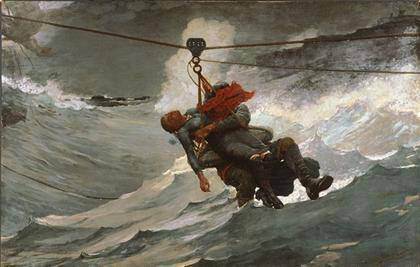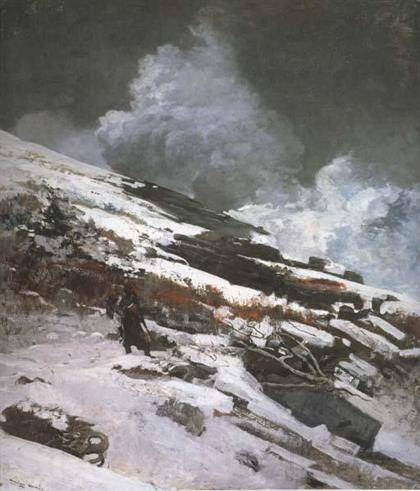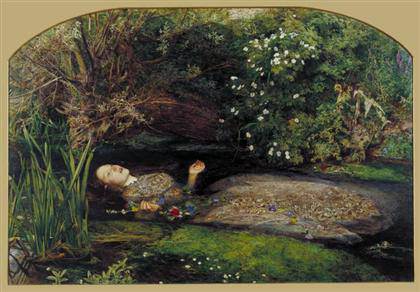
Winslow Homer
The Life Line, 1884
Oil on canvas, 28 5/8 x 44 3/4 inches (72.7 x 113.7 cm)
Philadelphia Museum of Art, The George W. Elkins Collection, 1924

Winslow Homer
Winter Coast, 1890
Oil on canvas, 36 1/8 x 31 11/16 inches (91.8 x 80.5 cm)
Philadelphia Museum of Art
Winslow Homer’s ‘Shipwrecks’ in Philadelphia ‘Shipwreck! Winslow Homer and The Life Line’ shows Winslow Homer’s depictions of maritime catastrophe and rescue. Philadelphia Museum of Art, September 22–December 16, 2012.]]>
Source: Philadelphia Museum of Art
While living in a tiny fishing village in England in 1881-82, the American artist Winslow Homer was profoundly moved by the sight of a shipwreck that would focus his imagination on the power and peril of the sea. His art took on a new seriousness and drama, demonstrated in a major painting made soon after his return to the United States: “The Life Line” (1884),one of his greatest popular and critical successes. A masterpiece owned by the Philadelphia Museum of Art for almost 90 years, “The Life Line” is the centerpiece of this exhibition about the making and meaning of an iconic American image of rescue at sea. The exhibition contains 33 works by or after Homer, complemented by a range of precedents in the shipwreck and rescue genre including 35 paintings, watercolors, etchings, engravings, sketches and ceramics ranging in date from the mid-17th to the early 20th centuries. The Philadelphia Museum of Art is the only venue for this important exhibition.
“We are delighted to focus on Homer’s “The Life Line” in this important exhibition, as it places a major artistic milestone in an illuminating context within the traditions of marine painting and American art and history”, says Timothy Rub, The George D. Widener Director and Chief Executive Officer in the Philadelphia Museum of Art.
The exhibition explores the related themes of the exhilaration of ocean travel, disaster on the high seas, and romantic rescue, while examining the creative contributions of one of this country’s greatest artists to the rich tradition of marine painting. The opening gallery introduces the importance of ocean travel to the Eastern seaboard of the United States and its significance to Boston-born Homer. The next section takes on a darker tone, surveying the theme of shipwreck during the first great age of marine painting from the 17th through the 19th centuries. Other sections look at the theme of the romantic rescue of the helpless damsel, while “Heroes of the Coastline: The Rise of the Unites States Life Saving Service” examines the real life historical context of these rescue scenes. ”Heroes of the Coastline” also tells the story of the spectacularly successful reform of the shoddy American coastal defenses, beginning with the establishment of the United States Life Saving Service in 1871, followed by the integration of new technology and the employment of trained personnel.
Related content
Winslow Homer’s Legacy in Maine – Portland Museum (exhibition, 2012)
Follow us on:


